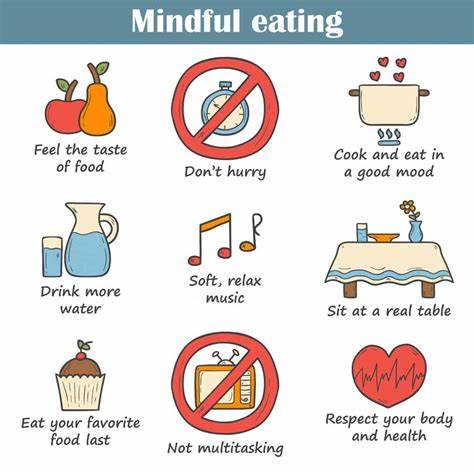While balancing work, family, and all the other duties of daily life, eating can become extremely regular. Perhaps you want to eat dinner in front of the TV to unwind at the end of the day, or perhaps you need to grab a fast bite while responding to emails.
It seems as though eating is a mindless and automatic process. But when was the last time you stopped to savor your meal? What would happen if you gave each meal some thought?
By taking your time and practicing mindfulness as you eat, you may promote not only healthy food choices, but also a positive relationship with both food and your body. Here is all you need to know about mindful eating, from how to do it to how it varies from intuitive eating.
What is mindful eating, exactly?
The gist of mindful eating is to include mindfulness practices at all meal and snack times. The Center for Mindful Eating defines mindfulness as “the ability to bring full attention and awareness to one’s experience, at the moment, without judgment.”
According to proponents of the practice, mindful eating “applies mindfulness to food selection and the eating experience.” You are said to become more aware of your inner guidance regarding physical hunger, satiety cues, and meal selection.
The benefits of eating mindfully
Even though it takes time and work to develop mindful eating habits, making the effort to incorporate mindfulness into your meals can bring about a lot of comfort and delight. These are some benefits of employing this tactic:
By moving the focus of control away from outside authorities and cues and onto your body’s own inner knowledge, mindful eating can help you become more in tune with your body.
It can be helpful to make your eating choices and encourage a healthy connection with food by allowing yourself to become more conscious of your inner physical hunger and satiety cues.
improves the enjoyment of eating: Utilizing your senses is a crucial part of the mindful eating process because it helps you to immerse yourself in the process and observe reactions to food without passing judgment.
By filtering out unnecessary signs and distractions, learning to listen to your body and embracing using mindfulness when eating can help you feel in control and empowered with your food choices.
The difference between intuitive and mindful eating:
Two Registered Dietitians came up with the concept of intuitive eating, which emphasizes letting go of the diet mentality and coming to terms with food.
Some concepts of intuitive eating include respecting your body, honoring your health, questioning the food police, discovering the satisfaction factor, experiencing fullness, and coping with your emotions with kindness.
Both strategies emphasize the necessity of using internal cues to determine eating decisions, and they really complement one another.
However, intuitive eating goes beyond the eating experience and involves rejecting diet propaganda, whereas mindful eating stresses awareness and intention by being present in the eating experience.
Resources and challenges to mindful eating
If your first attempt at mindful eating does not go as planned, don’t give up. Be kind to yourself; it might be challenging to return to the fundamentals and pay attention to our bodies in the midst of the continual barrage of food and nutrition information.
Start by concentrating on just one of the aforementioned behaviors, such as appreciating the rich flavor and texture of your food or taking a moment to savor the meal that has been delivered to your table.








